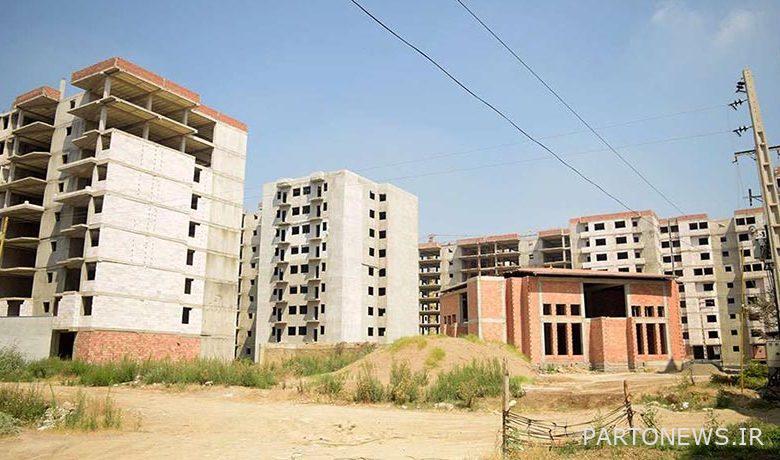Where did the national housing construction go?

According to Tejarat News, national housing in Tehran is facing a shortage of land. Also, in this province, land in the center of the city is to be handed over with the production plan. The obtained resources are allocated to provide the infrastructure of the strata that can pay less.
Quoted from ISNAThe CEO of the National Land and Housing Organization stated in a press conference this morning: We have identified 7,000 hectares of land in the entire country in the National Housing Movement Plan. This number includes one million and 700 thousand units. In Tehran province, the number is not significant and so far 27 hectares of land have been identified. We are planning to add new lands to this plan in the eastern cities of Tehran province.
Alireza Fakhari added: attention has been paid to environmental issues in the lands that we considered. Therefore, we have advanced several steps compared to the previous plans.
In response to a journalist’s question about what plan you have made to implement the Supreme Leader’s orders regarding housing issues, Fakhari said: Our main issues are related to the infrastructure of the housing supply sector. including materials, wages and other issues that affect. Some of the local regulations by the councils are effective in the area of housing provision. But what is important is providing the resources we need to produce housing to create a balance between supply and demand.
He continued: Free land transfer is on the agenda of the Ministry of Roads and Urban Development. In our own system, we persuaded our friends to submit their points of view to fulfill the order of Hazrat Agha. If we can create the necessary resources, we can create a revolution in the production of cheap housing. If a bilateral space is created between the manufacturers and the government, it can affect the finished rate of the production units.
Fakhari also said about water supply restrictions: We will not overload the land for housing in places where we have water restrictions.
The story of land rent to some previous government employees
A journalist asked, in the previous government, in one of the organizations, rents in the land sector were offered to some employees, what action have you taken to identify and deal with this issue, Fakhari replied: I have not heard anything like that.
The CEO of the National Land and Housing Organization considered the lands identified in the country to be 160,000 hectares and said: 7,000 hectares of land, of which 7,000 hectares have been provided, includes about 10% of this number. Therefore, we have to see how much of these lands can definitely be returned to the government. The proposal of this issue in the form of Article 10 was mostly in the field of government-to-government coordination. We have not yet reached the point where government agencies do not cooperate. For example, the Ministry of Oil has recently cooperated and announced preparations regarding the transfer of land so that the employees of the Ministry of Oil can become house owners.
In response to the question, whether the cost of land preparation is the responsibility of the applicants, he emphasized: At today’s rate, 25 million Tomans are allocated for land preparation for each identified unit, which we, as the Ministry of Roads and Urban Development, as well as the agents ourselves, take the initial steps for preparation. . This includes leveling the land and providing basic infrastructure. In some cities where the land has a steep topography, we have to pay more, and the government takes over a part of this cost.
Land consumption has reached zero
Stating that after the formation of the Land Protection Unit, land grabbing has reached zero, Fakhari said: “Some people may have taken measures, but they were dispossessed with timely measures and the lands were returned to the government.” The statistics of the amount of lands that have been expropriated so far are completely available.
The CEO of the National Housing Organization stated: In some areas, such as Tehran (Ivanki), Sistan and Baluchistan, Razavi Khorasan, and parts of Kerman, we have no problem with land supply. But there are problems in some places, such as the west of the country and the Kurdistan region. In Gilan and Mazandaran, due to the quality of the land and the fact that the land is agricultural, we have a problem in providing land.
The lands of Tehran are being made productive
In response to a question about the reason for the non-starting of the National Housing Movement projects in Tehran province, where there is plenty of land in some places such as Parand, Fakhari said: “In Tehran, we actually have a problem with land supply.” Due to regulations, we have to provide land in the form of public services that create justice. That is, if we hand over land in the form of the National Housing Movement Plan, in terms of social justice, its benefits will reach the public. In places where we have land in the center of the city, we hand over it in the form of production, and the resulting resources are allocated to provide infrastructure for the strata that can pay less, to accelerate the housing of these people.
He stated: Despite the land restrictions in Tehran province, we have the agenda of developing areas such as Parand, Pardis, Ivanki and cities such as Kharazmi.
Read the latest housing news from Tejarat News.

